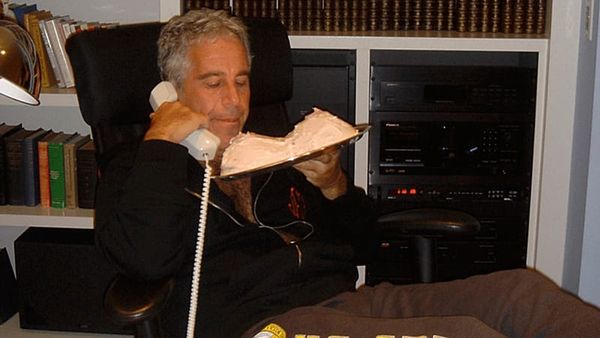This article has been reviewed for accuracy and context by Dr. Sarah Meehan O’Callaghan, an interdisciplinary researcher whose work explores culture, gender, and psychology. Her expertise ensures the insights presented are well-grounded and credible.
Invisible String Theory Explained
Invisible string theory suggests we’re all subtly connected to certain people by a hidden bond that guides them into our lives before we meet.
Healthline puts it this way: “The invisible string theory follows the idea that you are connected to your soulmate via a metaphorical string.”

Unlike rigid soulmate myths, this string is flexible. You may drift, reconnect, stretch, or loosen, but the bond itself never snaps. Elite Psychology contrasts this belief with growth-mindset approaches, noting that people who believe too strongly in destiny may give up too easily when faced with challenges.
Invisible string theory lives in the space between fate and effort. It doesn’t suggest love is effortless, only that some relationships might be wired to matter more.
A 2015 study published in the Journal of Adult Development tracked 330 young adults in Poland and found that believing someone is “out there” helped reduce anxiety and improve emotional well-being.
The bottom line is that if you think a partner is somehow meant for you, you’re less likely to stress about finding them. This doesn’t prove destiny is real, but it highlights the emotional boost this belief can bring in today’s unpredictable dating world.
Folklore Roots of Invisible Bonds
Let’s start in the east. In Chinese folklore, Yuè Lǎo, the matchmaker god, ties destined lovers together with a red, sometimes invisible, string. The tale goes: the thread may stretch or tangle, but never break. That’s invisible string theory in its oldest form.

The Remake (2016–2019) by Xuân Lam on Behance depicts Bà Nguyệt/Yue Lao tying a couple with a red cord.
Shift to ancient Greece, where Aristophanes’ speech in Plato’s Symposium imagined soulmates as once-whole beings torn apart by Zeus:
“Love … calls back the halves of our original nature together.”
That’s destiny, but more metaphysical or a search for wholeness.
By the 19th century, Western literature leaned into tragic destiny. In Romeo and Juliet, fate-bound lovers are undone by circumstance.
What sets invisible string theory apart? It’s a flexible, resilient thread that lets fate coexist with choice, offering a middle ground where destiny meets personal growth.
Scientific Take on the Theory
The phrase “invisible string theory” might sound like it belongs in a fairytale, but relationship science treats it as something entirely symbolic. Researchers view it as reflecting how we create meaning in romantic connections.
Two main belief systems often appear: “destiny beliefs,” where people feel some relationships are fated, and “growth beliefs,” where relationships develop through effort and adaptability.
A 2024 study from SAGE followed couples over two years. Those who leaned on destiny beliefs felt more satisfied early on, but that initial glow didn’t predict long-term success.
Another report via PsyPost pointed to emotional fallout. People with fixed ideas about fate were likelier to revisit old flames or disappear mid-connection. These patterns often led to confusion.
Dr. C. Raymond Knee, who introduced the concept of implicit relationship theories, explains that when people rely too much on fate, they tend to walk away when challenges arise. There’s little motivation to adjust or work through conflict.
In physics, string theory deals with subatomic energy and mathematical models, completely unrelated to romantic ideas. The overlap in terminology is just a coincidence.
But the emotional version has real influence. Believing in invisible strings can make dating feel less frantic, offering comfort in uncertainty. As Dr. Wendy Walsh told Verywell Mind, it’s “a calming to think that your soulmate is out there.”
Why Modern Couples Crave Destiny Stories?
If invisible strings aren’t running the show, why are so many people still drawn to the idea of fate? The answer may lie in the chaos of modern dating.
A 2016 study on dating apps found that more choices actually made people less satisfied. As the number of options increased, acceptance rates dropped by 27%.
When everything feels fast and disposable, the pull toward something meaningful strengthens. The idea that a connection was sparked by more than luck, especially during isolation, brings comfort. The pandemic only amplified that.
Long stretches of emotional distance made the thought of someone being “meant for you” feel grounding.
Even pop culture leaned in. Kim Kardashian told Vogue her romance “felt meant to be” after a single DM. Harry Styles tweeted “Timing is destiny” right after releasing Harry’s House.
There’s a reason we eat it up. Stories that hint at fate help us feel like something deeper is at play, especially when dating starts to feel transactional. A strange coincidence or cinematic moment becomes a sign that this connection is part of a larger pattern.
But there’s the risk that the narrative can become a shield. Feeling like you’re meant to be doesn’t replace showing up, doing the work, or choosing your partner every day.
Psychological Triggers Behind Destiny Belief
Belief in invisible string theory often taps into deeper psychological wiring like attachment patterns, pattern recognition, and the way we construct our life story.
Attachment style is one major influence. People with anxious attachment often cling to the idea of destiny because it gives shape to uncertainty. If a connection feels prewritten, it feels safer.
According to relationship research, secure, anxious, and avoidant attachment types interpret romantic experiences through different emotional lenses.
Then there’s pattern-seeking. If someone believes they’ve found “the one,” they’ll start spotting signs like shared birthdays, matching playlists, and mutual friends. It’s textbook confirmation bias, where we selectively gather evidence that supports what we already want to believe.
Narrative identity fills in the rest. Most people carry an internal story about who they are and how love should unfold. Destiny threads slot perfectly into this mental screenplay. A chance meeting becomes fate. Delayed timing feels like foreshadowing.
When Destiny Turns Destructive
Belief in invisible strings can feel comforting until it justifies harmful behavior. When someone clings to a connection that isn’t mutual, the idea of fate can start to resemble control.
A 2023 study published in the Journal of Interpersonal Violence 6.5% of people experienced stalking over the span of a year, with many citing lasting damage to their mental health. The emotional cost is real.
Take the case of “Taylor,” a woman who kept showing up outside her ex’s workplace and texting him obsessively. She believed the universe would eventually reunite them. But what she called destiny, he experienced as pressure.
Love shaped by fate still needs boundaries. Even if a connection feels deep or inevitable, it can’t thrive without consent. Sometimes, stepping back is the only way to prove it was real in the first place.







